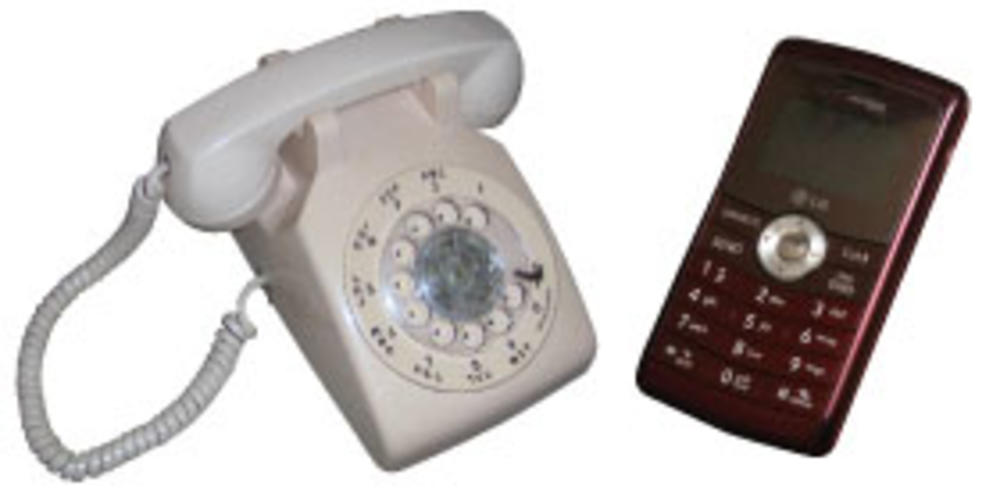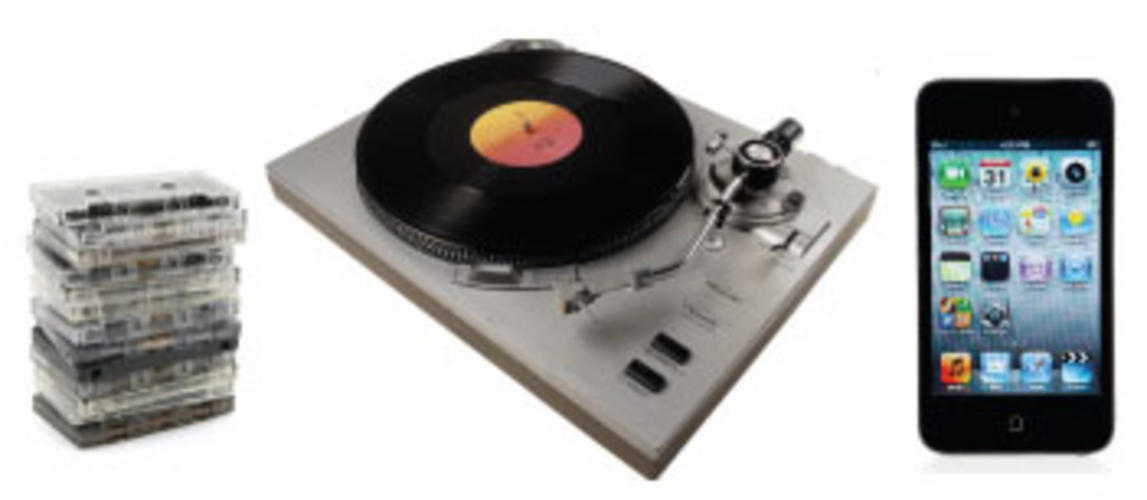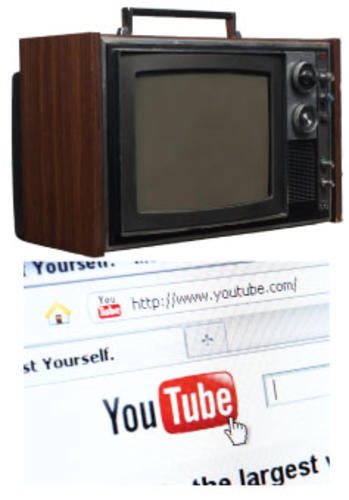
Back to the Class of 1986
In the quarter-century since the Class of ’86 graduated, dizzying changes in technology have reshaped our lives. The undergraduate experience is very different today. A comparison of two dorm rooms makes the point: The gadgets that made Tom Kessler so proud in the 1980s would strike Molly Higgins ’14 as preposterously archaic. At the same time, Tom wonders how Molly’s generation manages to study amid the distractions of being perpetually “wired.”
When the personal computer dethroned the typewriter
TOM ’86: Strongly associated with the solitary “nerd,” personal computers were rare on dormitory desks until the mid-’80s. Most undergrads still typed their papers using a technology first advertised to Princeton students in 1887. Booting up the state-of-the-art IBM 5150 filled Tom’s room with whirrings and groanings; minutes later, green letters appeared as if by magic on the black screen. Data were stored on floppy disks that resembled roofing shingles.
MOLLY ’14: Her MacBook Pro weighs less and is thinner than the keyboard of Tom’s IBM 5150 — which was two inches thick. Her little laptop’s memory is measured not in kilobytes, but in gigabytes (a unit 1 million times bigger). Tom’s IBM 5150 could “store more words than a huge cookbook,” its manufacturer bragged; Molly’s device gives her access to 12 million books on Google. She can recall, as a child, seeing a person use a typewriter.
When modems allowed computers to talk to each other – all the way across campus
TOM ’86: A computer-science major, Tom worked all summer to earn enough to buy a 1,200-baud modem. With it, he could dial into the computer center out on Prospect Avenue, saving him a long walk with his floppies. To link the whole campus by “electronic mail” was just a dream — the underground TigerNet coaxial cable reached only two-thirds of the buildings and was unknown to all but the tech-savvy.
MOLLY ’14: Today’s students can sit on historic Cannon Green and snatch the Internet out of the air, an achievement that would have astounded the tunneling excavators of TigerNet. Extensive Wi-Fi means students surf the Web during lectures. “People around me are online shopping and playing games,” Molly observes. “I say to myself, ‘Focus on your notes, listen to the professor.’”
When telephones had cords, and “text” was never, ever a verb
TOM ’86: Up to two weeks into every new school year, New Jersey Bell technicians barged into dorm rooms to install rotary telephones. Having a touch-tone device cost an extra dollar each month. Tom used his phone only rarely — perhaps five calls per week, to his parents and Victor’s Pizzeria on Nassau Street. Undergraduates were notoriously difficult to reach in those days, their phones usually going unanswered or giving a busy signal. “There was always substantial confusion among roommates as to who called whom, and who had or had not paid the phone bill,” Tom remembers.
MOLLY ’14: When cell phones first swept campus in the late 1990s, some observers derided their loudly chatting users, seemingly as self-important as Wall Street traders. Today, everyone has them. Molly uses her LG enV phone to talk four hours a week, but its real value is for ceaseless texting — up to 50 messages a day. She remembers calling friends on their “home phones” as a little girl and having to memorize telephone numbers. Today she doesn’t know of a single dorm room with a landline, and the manager of the campus phone network says the service eventually may be discontinued.
When listening to music meant vinyl or tape — and big, shiny components
TOM ’86: Savoring the melodies of REO Speedwagon meant plunking an LP on the turntable, then lounging back with bulky headphones. More portable was the cassette tape, then at the height of its popularity, having lately replaced the eight-track (CDs were just taking off). To own a messy collection of a few hundred records and cassettes was the mark of a truly fanatical audiophile.
MOLLY ’14: Stored with more than 1,000 tunes, her iPod Touch serves her as alarm clock and constant companion while jogging or walking to class. The device keeps her connected, too. “Most students are never unplugged,” Molly says. “Everyone is constantly e-mailing or texting. But not everyone has a smartphone ... yet.”
When entertainment meant the boob tube – static and all
TOM ’86: In antediluvian days, “screen media” were confined to the TV set and the local movie theater. Manufactured in the Nixon era, Tom’s color Zenith (shown in room, opposite page) featured a handle in spite of being almost too heavy to lift. “Reception was pretty snowy” behind thick Gothic dormitory walls, he remembers, and there were only three reliable channels. Miami Vice, Letterman, Monday Night Football — that was all he wanted to see. Students pleaded in vain for cable television. Finally, sheer boredom drove them to their textbooks.
MOLLY ’14: She doesn’t own a television and rarely watches the networks. Shows worth following can be seen online. “In the past, when your friends were all studying, I guess you would go study, too,” she muses. “But now you can go to the Internet and watch YouTube videos. It’s very easy to get distracted, and all of a sudden you have an exam tomorrow.”
W. Barksdale Maynard ’88 is the author of Woodrow Wilson: Princeton to the Presidency and a book on the history of Princeton’s architecture, coming in 2012.












No responses yet